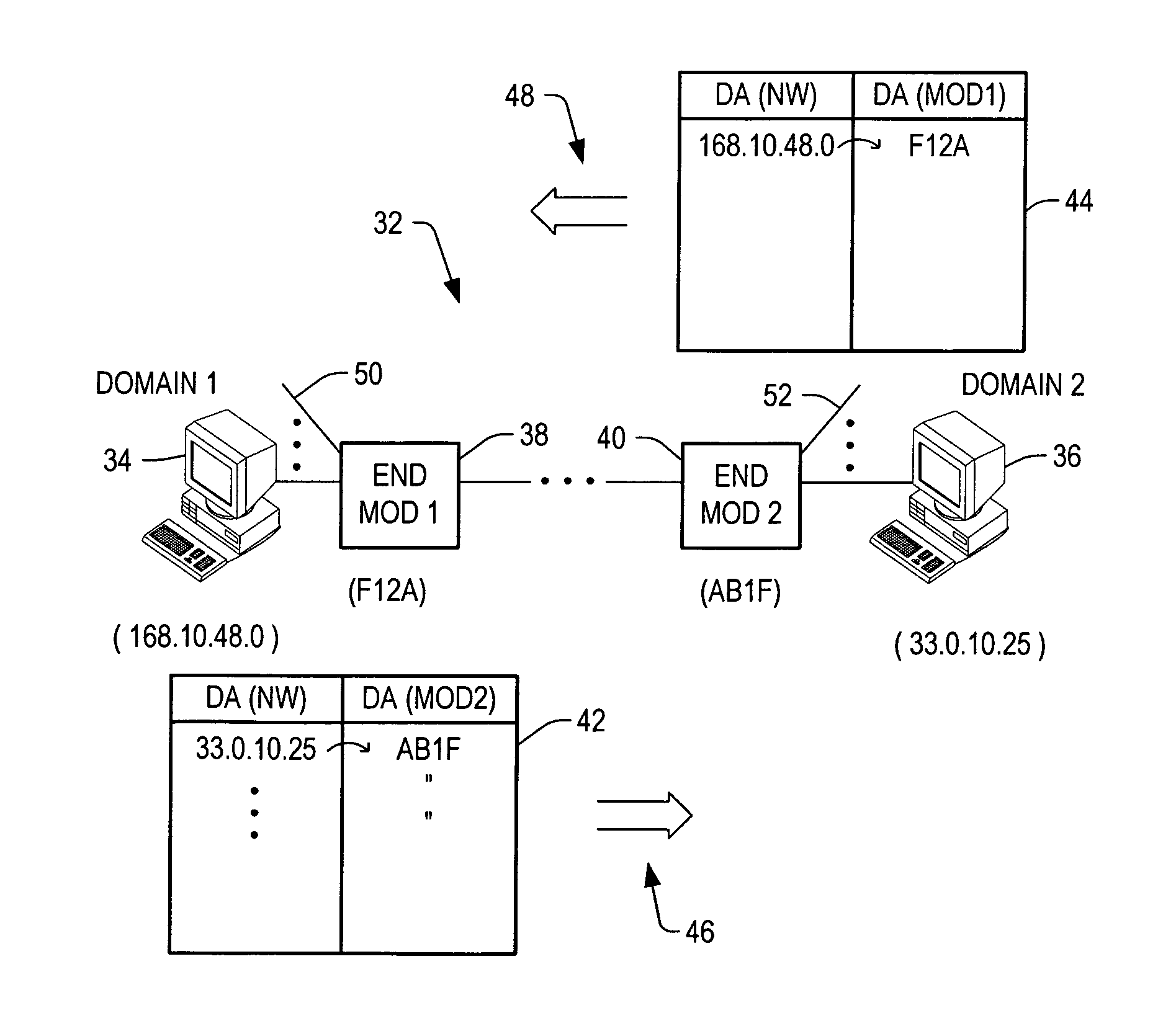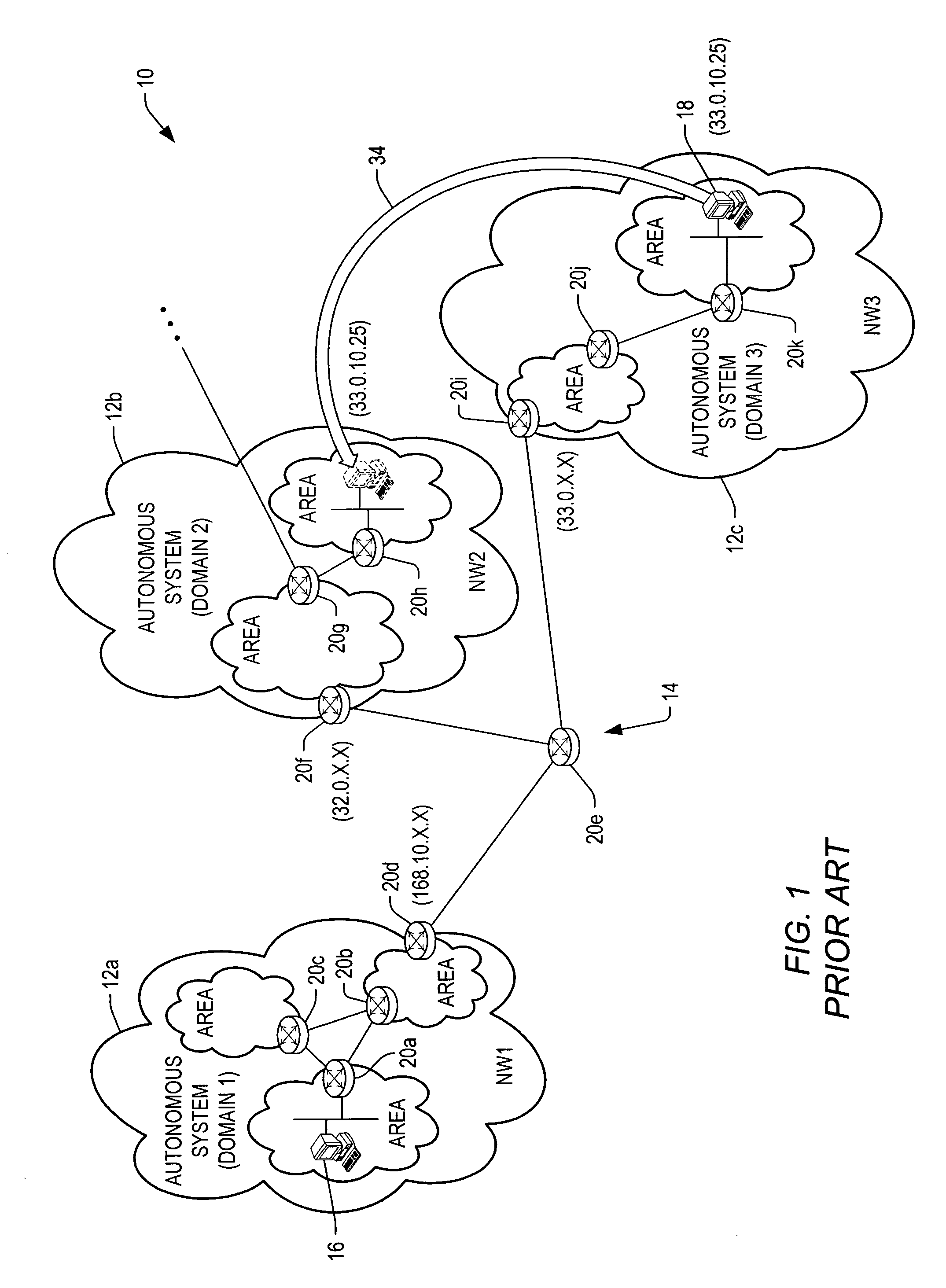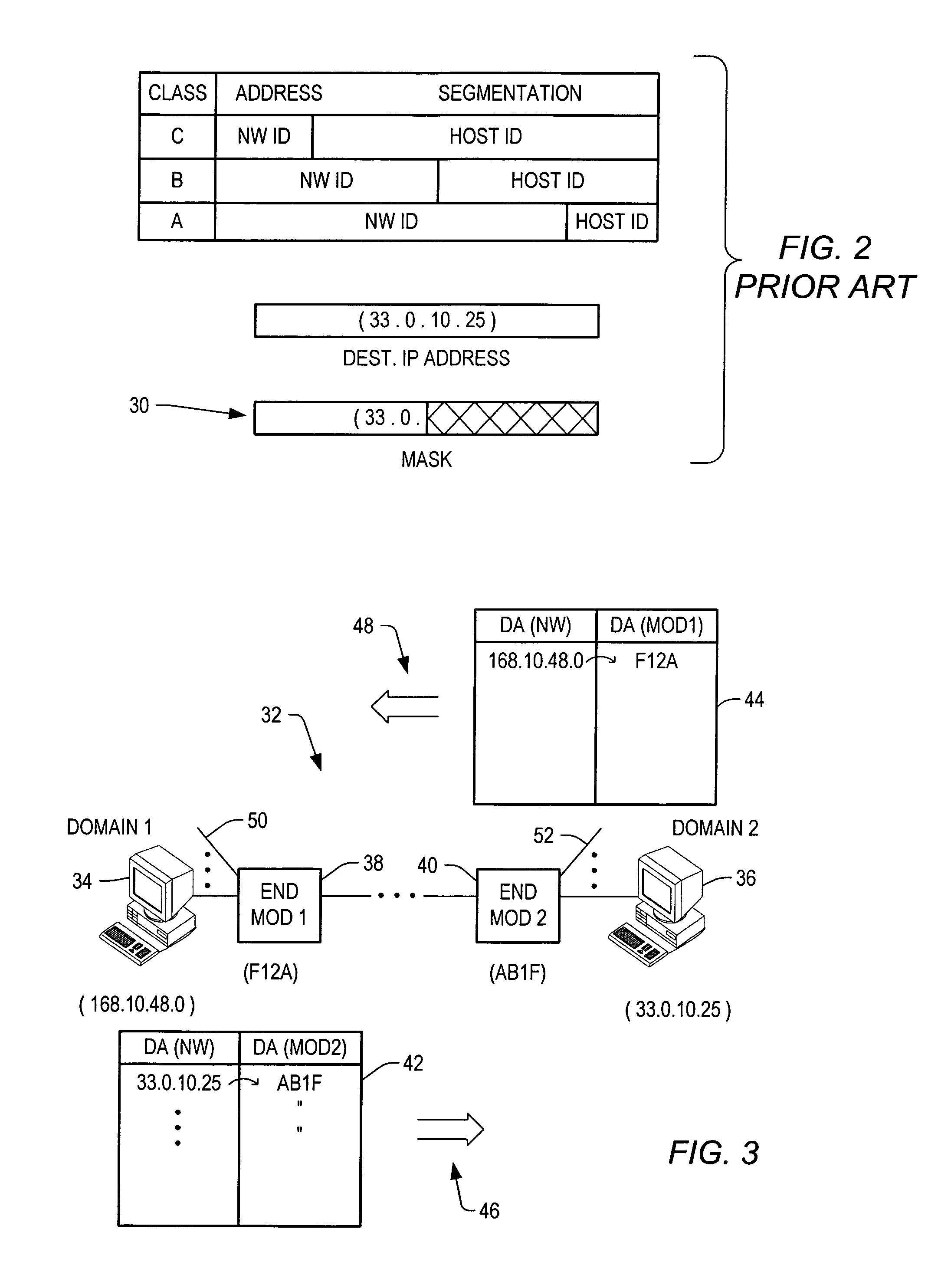Apparatus, system, and method for routing data to and from a host that is moved from one location on a communication system to another location on the communication system
a communication system and data routing technology, applied in the field of communication systems, can solve the problems of user's inefficient use of the ip address allocated to that user, the inability of conventional routing mechanisms to allow non-notified roaming of hosts, and the severe limitation of user's mobility
- Summary
- Abstract
- Description
- Claims
- Application Information
AI Technical Summary
Benefits of technology
Problems solved by technology
Method used
Image
Examples
Embodiment Construction
[0036]Turning now to the drawings, FIG. 3 illustrates an internet 32, to which a pair of hosts 34 and 36 are connected. At the distal ends of internet 32, adjacent hosts 34 and 36, are end modules 38 and 40, respectively. Using the example of FIG. 1, host 34 may operate to source a packet of data from network source address 168.10.48.0, for example. The packet of data is destined for host 36; however, host 36 has been moved from an intranet having an identification number 33.0 to another intranet having an identification number 32.0. The network identification number of host 36, nevertheless, remains the same: 33.0 (network identification number) and 10.25 (host identification number).
[0037]When host 36 is connected to its new location on end module 40, the network identification number 33.0.10.25 is mapped within a mapping table of module 40 to the identification number of module 40, which in the example shown is AB1F. As described herein above and below, the identification numbers...
PUM
 Login to View More
Login to View More Abstract
Description
Claims
Application Information
 Login to View More
Login to View More - R&D
- Intellectual Property
- Life Sciences
- Materials
- Tech Scout
- Unparalleled Data Quality
- Higher Quality Content
- 60% Fewer Hallucinations
Browse by: Latest US Patents, China's latest patents, Technical Efficacy Thesaurus, Application Domain, Technology Topic, Popular Technical Reports.
© 2025 PatSnap. All rights reserved.Legal|Privacy policy|Modern Slavery Act Transparency Statement|Sitemap|About US| Contact US: help@patsnap.com



